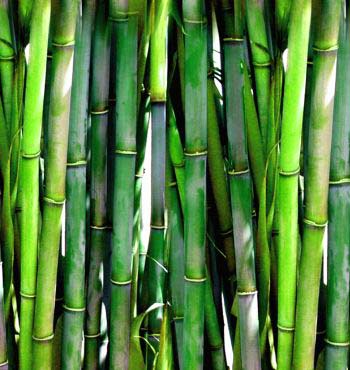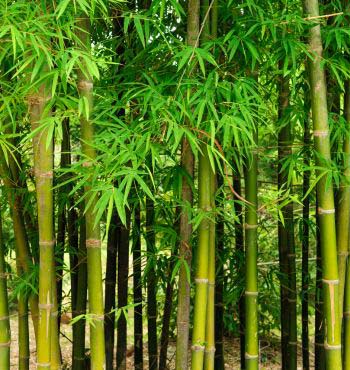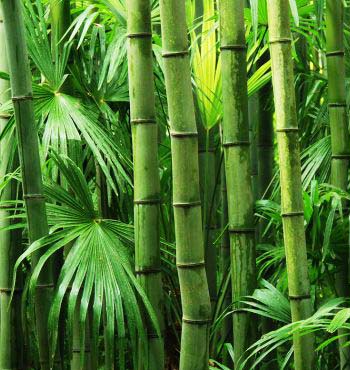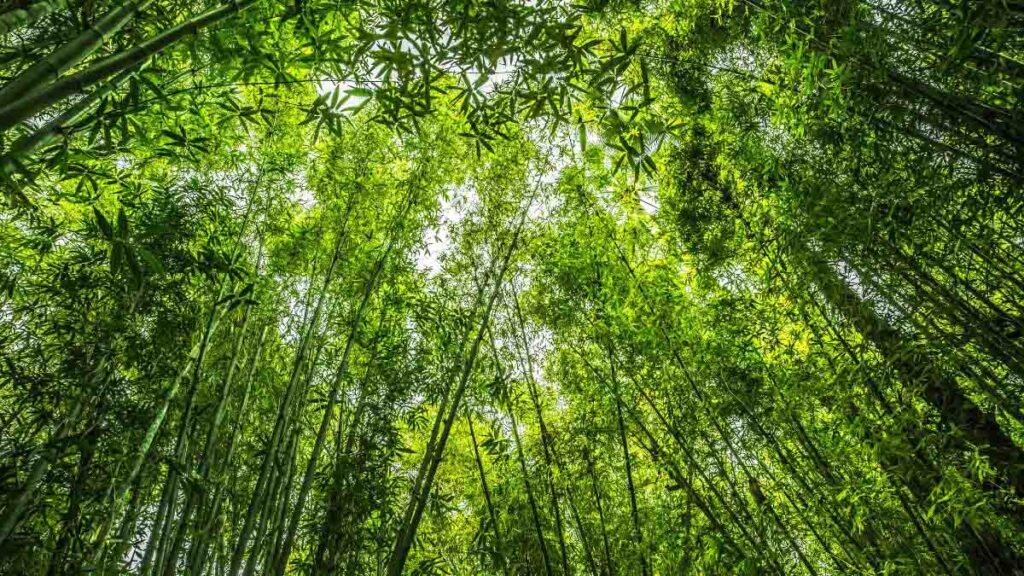Bamboo plants can be classified into running bamboo and clumping bamboo. Running bamboo spreads quickly and can be invasive, while clumping bamboo grows in tight clusters.
The types of bamboo plants offer a wide range of sizes, shapes, and colors, making them suitable for various landscaping and ornamental purposes. Bamboo plants are known for their fast growth and hardy nature, making them a popular choice for homeowners and landscapers.
There are over 1,000 species of bamboo, each with its own unique characteristics and growth habits. Understanding the different types of bamboo plants is essential for choosing the right variety for your specific needs. Whether you’re looking to create a privacy screen, add a tropical feel to your garden, or attract wildlife, there’s a bamboo plant that can fulfill your landscaping requirements. We’ll explore the various types of bamboo plants and their distinct features, so you can make an informed decision for your outdoor space.
Bamboo Basics
Bamboo plants are renowned for their versatility, beauty, and eco-friendly characteristics. They have been used for centuries in various cultures and are known for their rapid growth. Understanding the basics of bamboo plants can help in selecting the right type for your specific needs.
What Is Bamboo?
Bamboo is a type of evergreen perennial plant that belongs to the grass family. It is known for its woody stems and rapid growth, making it a sustainable option for various purposes. There are numerous species of bamboo, each with its unique characteristics and uses.
Characteristics Of Bamboo Plants
- Bamboo plants have strong, flexible stems that can be used for construction, furniture, and crafts.
- They are fast-growing, making them a valuable resource for reforestation and erosion control.
- Bamboo is known for its environmental benefits, as it releases 30% more oxygen into the atmosphere and absorbs more carbon dioxide compared to other plants.
- There are two main types of bamboo: running and clumping. Running bamboos spread aggressively, while clumping bamboos grow in tight, non-invasive clumps.

Benefits Of Bamboo Plants
Bamboo plants offer numerous benefits, making them an excellent addition to any garden or landscape. From their environmental advantages to their practical uses, bamboo plants are incredibly versatile and sustainable. Let’s explore the various benefits of bamboo plants.
Environmental Benefits
Bamboo plants play a crucial role in environmental conservation due to their impressive capabilities. Some of the key environmental benefits of bamboo include:
- Carbon Sequestration: Bamboo plants help in absorbing carbon dioxide from the atmosphere, making them effective in combating climate change.
- Soil Erosion Prevention: The extensive root system of bamboo plants helps in stabilizing soil, thus preventing erosion and landslides.
- Renewable Resource: Bamboo is a highly renewable resource, with some species reaching maturity in as little as one to five years, making it an eco-friendly alternative to traditional timber.
Practical Uses Of Bamboo
Bamboo’s versatility extends beyond its environmental benefits, with a wide range of practical uses. Some of the popular practical uses of bamboo include:
- Construction Material: Bamboo is widely used as a building material for its strength, durability, and flexibility, making it ideal for construction purposes.
- Furniture and Decor: The unique aesthetic appeal of bamboo makes it a popular choice for furniture, home decor, and artisan crafts.
- Textiles and Paper: Bamboo fibers are used in textile production, creating soft and breathable fabrics, as well as in papermaking due to its high cellulose content.
Popular Bamboo Varieties
When it comes to adding a touch of elegance and natural beauty to your garden, bamboo plants are an excellent choice. These versatile plants come in a variety of sizes and colors, each with its unique characteristics. In this section, we will explore some of the most popular bamboo varieties that can transform your outdoor space into a lush haven.
Chinese Timber Bamboo
A popular choice among bamboo enthusiasts, Chinese Timber Bamboo (Phyllostachys edulis) is known for its strength and versatility. This tall and upright variety can reach heights of up to 50 feet, making it perfect for adding height and privacy to your garden. With its thick green culms and feathery foliage, Chinese Timber Bamboo creates an enchanting and serene atmosphere.
Giant Bamboo
True to its name, Giant Bamboo (Dendrocalamus giganteus) is one of the largest bamboo varieties in the world. This awe-inspiring plant can grow up to an astonishing 100 feet tall, making it a striking centerpiece for any garden. Its thick culms and lush green leaves create a tropical paradise right in your own backyard. Whether you want to create a natural screen or simply make a bold statement, Giant Bamboo is an extraordinary choice.
Black Bamboo
With its unique black stems, Black Bamboo (Phyllostachys nigra) adds an alluring and exotic touch to any landscape. This clumping bamboo variety is not only visually stunning but also resilient and fast-growing. Its slender culms, which start off green and gradually transform into dark ebony, create a striking contrast against the foliage. Planting Black Bamboo in your garden will make a bold and memorable statement.
Golden Bamboo
Golden Bamboo (Phyllostachys aurea) is prized for its vibrant and radiant appearance. The elegant arching culms, which ripen to a golden hue, create a warm and inviting atmosphere in any garden. This clumping bamboo variety is not only visually appealing but also easy to maintain. Golden Bamboo thrives in a wide range of climates, making it a popular choice for gardeners around the world.
Cold Hardy Bamboo
If you’re looking for bamboo plants that can withstand cold winters, then cold hardy bamboo varieties are perfect for your garden. These types of bamboo can thrive even in freezing temperatures, making them an ideal choice for those who live in colder climates.
Green Hedge Bamboo

Green Hedge Bamboo, scientifically known as Bambusa multiplex, is one of the most popular cold hardy bamboo plants. This variety is characterized by its dense foliage and slender culms, which can reach heights of 25 to 30 feet. The vibrant green leaves of Green Hedge Bamboo can provide a beautiful privacy hedge for your garden, allowing you to enjoy your outdoor space in peace.
With its cold hardiness and rapid growth rate, Green Hedge Bamboo is a favorite among garden enthusiasts. Whether you’re looking to create a screen, windbreak, or simply enhance the aesthetics of your landscape, this bamboo variety will not disappoint.
Yellow Groove Bamboo
Yellow Groove Bamboo, or Phyllostachys aureosulcata, is another remarkable cold hardy bamboo species. As the name suggests, this bamboo variety features yellow grooves on its culms, adding a touch of uniqueness to your garden. With a maximum height of around 40 feet, Yellow Groove Bamboo creates an impressive focal point in any outdoor space.
Aside from its ornamental value, Yellow Groove Bamboo is highly regarded for its cold tolerance. It can survive temperatures as low as -20°F (-29°C), making it a popular choice for gardeners who experience harsh winter conditions. Whether you’re planting it as a solitary specimen or as part of a bamboo grove, Yellow Groove Bamboo will undoubtedly make a stunning addition to your landscape.
Temple Bamboo
Temple Bamboo, scientifically referred to as Semiarundinaria fastuosa, is an elegant and robust cold hardy bamboo species. With its graceful, arching culms and delicate foliage, Temple Bamboo adds a touch of serenity to any garden. This bamboo variety can grow up to 25 feet tall, creating a sense of verticality and grandeur in your outdoor space.
One of the remarkable features of Temple Bamboo is its ability to withstand extremely cold temperatures. Whether you live in a region with frigid winters or experience occasional frost, Temple Bamboo will continue to thrive and bring an air of tranquility to your garden.
Tropical Bamboo
Tropical bamboo plants are a stunning addition to any garden, with their majestic appearance and lush green foliage. These types of bamboo thrive in warm and humid climates, making them ideal for tropical regions. In this article, we will explore three popular varieties of tropical bamboo: Bambusa Vulgaris, Dendrocalamus Strictus, and Gigantochloa atroviolacea.

Bambusa Vulgaris
Bambusa Vulgaris, also known as common bamboo or giant bamboo, is one of the most well-known tropical bamboo species. This fast-growing bamboo can reach heights of up to 100 feet, adding a dramatic touch to any landscape. Its sturdy culms and large, feathery leaves create a dense canopy, providing shade and privacy.
This variety of tropical bamboo is highly versatile and has various uses, including construction, furniture making, and handicrafts. Its strong and flexible culms make it an excellent choice for building structures like fences, gates, and pergolas. Additionally, Bambusa Vulgaris is popularly used for making furniture due to its durability and natural aesthetic appeal.
Dendrocalamus Strictus
Dendrocalamus Strictus, commonly known as male bamboo or solid bamboo, is another fascinating tropical bamboo species. This bamboo variety features thick-walled culms with distinct ridges, giving it a visually striking appearance. With maximum heights reaching up to 70 feet, it can add a touch of grandeur to any landscape.
One of the significant characteristics of Dendrocalamus Strictus is its exceptional strength, making it suitable for construction purposes. Its culms possess high tensile strength, which is why it is often used in building sturdy structures like bridges, scaffolding, and even earthquake-resistant houses. Furthermore, the dense foliage of this bamboo can create a natural barrier, adding privacy to outdoor spaces.
Gigantochloa Atroviolacea
Gigantochloa atroviolacea, commonly known as black bamboo, is a distinct and visually appealing tropical bamboo species. This variety is known for its jet-black culms, which can reach heights of up to 80 feet. The contrast between the black culms and the bright green leaves creates a captivating aesthetic that stands out in any garden.
Black bamboo is highly valued for its decorative purposes due to its unique coloration. Gardeners and landscape enthusiasts often use it as an ornamental feature to create focal points or divide spaces. Its dense clusters of dark culms can bring a sense of depth and contrast to any garden setting.
These are just a few examples of the tropical bamboo species available. Each variety offers its own unique aesthetic and functional characteristics, making them a wonderful addition to any tropical garden or landscape. Whether you’re looking to create a private oasis or add an exotic touch to your space, tropical bamboo plants are sure to leave a lasting impression.
Ornamental Bamboo
Ornamental bamboo plants are a stunning addition to any garden or landscaping project. With their graceful beauty and unique aesthetics, these bamboo varieties not only serve as decorative elements but also as functional screens, hedges, or accents. In this section, we will explore three popular types of ornamental bamboo: Umbrella Bamboo, Weeping Bamboo, and Fernleaf Bamboo. Let’s dive in and discover their distinctive features!
Umbrella Bamboo
Umbrella Bamboo, scientifically known as Fargesia murielae, is a clumping bamboo species that originates from the Sichuan and Hubei provinces of China. It is named for its unique umbrella-like foliage, which creates an enchanting canopy effect. This bamboo variety is highly valued for its hardiness and ability to grow in colder climates.
Here are some key points about Umbrella Bamboo:
- Height: Typically reaches a height of 10 to 15 feet
- Growth habit: Forms dense clumps, making it an excellent privacy screen or windbreak
- Foliage: Lush, vibrant green leaves delicately hang from arching canes
- Light requirements: Thrives in partial shade to full sun
- Soil preferences: Prefers well-drained soil with high organic matter

Weeping Bamboo
Weeping Bamboo, or Thamnocalamus spathiflorus, is a visually striking bamboo species known for its elegant, cascading canes. Originating from Ethiopia and Madagascar, this type of bamboo brings a sense of tranquility and movement to any landscape. Its graceful appearance makes it a popular choice for Japanese-themed gardens or as a focal point in water features.
Here are some key points about Weeping Bamboo:
- Height: Typically grows to a height of 12 to 18 feet
- Growth habit: Forms arching canes that create a weeping effect
- Foliage: Narrow leaves with a vibrant green color
- Light requirements: Prefers partial to full sun
- Soil preferences: Thrives in fertile, well-drained soil
Fernleaf Bamboo
Fernleaf Bamboo, scientifically known as Phyllostachys aureosulcata ‘Spectabilis’, is a distinctive variety known for its golden culms with green stripes. This bamboo species originated in China’s Zhejiang and Jiangsu provinces and is admired for its vibrant color and lush leafing pattern. The Fernleaf Bamboo adds an exotic touch to any garden design.
Here are some key points about Fernleaf Bamboo:
- Height: Can reach a height of 10 to 25 feet
- Growth habit: Forms a dense, upright clump
- Foliage: Golden-yellow culms with green stripes and dark green foliage
- Light requirements: Thrives in full sun to partial shade
- Soil preferences: Prefers well-drained soil with regular moisture
FAQ Of Types Of Bamboo Plants
What Are The Different Types Of Bamboo Plants?
Bamboo plants can be classified into running, clumping, giant timber, and ornamental varieties, each with unique characteristics.
How Does The Running Bamboo Plant Differ From Others?
Unlike clumping bamboos, running varieties spread rapidly through underground rhizomes, making them suitable for creating natural fences or privacy screens.
Which Bamboo Plant Is Ideal For Small Spaces?
If you have a limited area, dwarf bamboo plants are a great choice as they stay compact, making them perfect for container gardening or small gardens.
How Can I Ensure The Health Of My Bamboo Plants?
To maintain healthy bamboo plants, provide ample sunlight, well-drained soil, fertilize regularly, and control the spread by using a rhizome barrier or trimming the roots.
Conclusion
To sum up, exploring the different types of bamboo plants opens up a world of possibilities for garden enthusiasts. From the elegant beauty of the Black Bamboo to the towering presence of the Giant Buddha’s Belly, these plants offer a unique touch to any landscape.
Whether you’re seeking privacy, a calming aesthetic, or a natural focal point, there is a bamboo variety to suit your needs. Embracing the versatility and eco-friendly nature of bamboo can truly transform your outdoor space. So, go ahead and unleash your creativity by incorporating these wonderful plants into your garden.






